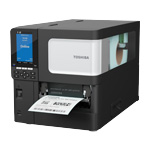Environmental Accounting
We adopt environmental accounting to quantitatively understand the environmental conservation costs and benefits, and utilize the quantitative data as guidelines for our business activities. For environmental conservation costs on a consolidated basis in fiscal 2023, total capital investments were 140 million yen and total expenses were 690 million yen. Total environmental benefits were 1.76 billion yen.
Target sites:
Toshiba Tec Head Office, Shizuoka Business Center, 1 domestic and 6 overseas manufacturing group companies
Target period:
April 1, 2023 to March 31, 2024
- Note: Some figures are estimates.
Environmental conservation costs
(Unit: Millions of yen)
| Category | Description | Investments | Costs | Changes in costs from FY2022 | |||
|---|---|---|---|---|---|---|---|
| Consolidated | Non-consolidated | Consolidated | Non-consolidated | Consolidated | Non-consolidated | ||
| (1)Business area costs | Reduction of environmental impacts (i) to (iii) | 144.8 | 89.1 | 192.1 | 109.4 | 26.4 | 7.5 |
| (i) Pollution prevention costs | Prevention of air, water, and soil pollution, etc. | 21.8 | 21.4 | 35.1 | 11.1 | 4.0 | 1.5 |
| (ii) Global environmental conservation costs | Global warming prevention, ozone layer protection, etc. | 121.2 | 65.9 | 109.6 | 72.4 | 18.2 | 3.2 |
| (iii) Resource recycling costs | Recycling of waste, etc. | 1.9 | 1.9 | 47.5 | 25.8 | 4.3 | 2.8 |
| (2) Upstream/downstream costs | Green procurement, collection/recycling of end-of-use products, etc. | 0.0 | 0.0 | 80.1 | 80.1 | -43.4 | -43.4 |
| (3) Administration costs | Establishment of EMS, environmental education, tree planting/clean-up activities, etc. | 0.0 | 0.0 | 238.8 | 217.0 | 0.5 | -2.9 |
| (4)R&D costs | Technical development for environmentally conscious products, etc. | 0.0 | 0.0 | 176.4 | 176.4 | 58.0 | 58.0 |
| (5) Social costs | Donations and support to groups/organizations, etc. | 0.0 | 0.0 | 1.4 | 0.0 | 0.1 | 0.0 |
| (6) Environmental damage restoration costs | Recovery of soil pollution, etc. | 0.0 | 0.0 | 0.1 | 0.1 | 0.0 | 0.0 |
| Total | 144.8 | 89.1 | 688.9 | 582.9 | 41.7 | 19.3 | |
Environmental conservation benefits
(Unit: Millions of yen)
| Category | Description | Amounts | Calculation method |
|---|---|---|---|
| A Actual benefits | Reduced charges for electricity and water, etc. | 1,072 | The amount of money, such as electricity charges and waste disposal costs, that was saved compared with the previous fiscal year plus earnings from the sale of objects with value. |
| B Assumed benefits | Reduced environmental impacts on water and atmosphere in monetary value | -110 | The amount of money was calculated by multiplying the cadmium equivalent value of each substance obtained from environmental standards and the American Conference of Governmental Industrial Hygienists Threshold Limit Value (ACGIH-TLV) by damage compensation for cadmium pollution. This calculation method provides a means of showing reductions in environmental impacts on the atmosphere, hydrosphere, and soil and makes it possible to compare the environmental impacts of different substances using the same standard by converting the impacts into monetary values. |
| C Customer benefits | Benefits of impacts reduced during product use in monetary value | 794 | Environmental impact reduction benefits during product use are evaluated in physical quantity units and monetary units. Energy-saving benefits are calculated by using the following equation: Benefits (yen) = Σ [(electricity consumption per year of the former model - electricity consumption per year of the new model) × number of units sold per year × benchmark unit price of electricity charge] |
| Total amount | 1,756 | ||
Actual benefits
| Item | Reduction of environmental impact* | Benefits measured in monetary values (millions of yen) |
|---|---|---|
| Energy | 593,100GJ | 1,013 |
| Waste | 1,455.3t | 15 |
| Water | 351,100m3 | 44 |
| Total amount | 1,072 | |
B Assumed benefits
| Item | Reduction of environmental impact* | Benefits measured in monetary values (millions of yen) |
|---|---|---|
| Benefits from reduction of chemical substances emissions | 0.3t | -110 |
C Customer benefits
| Item | Reduction of environmental impact* | Benefits measured in monetary values (millions of yen) | |
|---|---|---|---|
| Benefits from reduction of environmental impact during product use | Electricity | 64,260,000 kWh | 0 |
| Paper rolls | 1,346t | 794 | |
| Total amount | 794 | ||
* The reduction of environmental impact indicates the differences between FY2022 and FY2023. Negative figures show an increase in environmental impact beyond the benefits from reduction due to increased production, etc.
Corporate Data
-
- Topics
- CEO Message
- Message from Chief Sustainability Officer
- Toshiba Tec Group Sustainability Policy and Materiality KPI
- Special Feature SDGs x Toshiba Tec
- SDGs of Toshiba Tec
- Environment
- Social
- Governance
- Feature: 5-Minute Guide—Toshiba Tec CSR Activities
- Integrated Report














